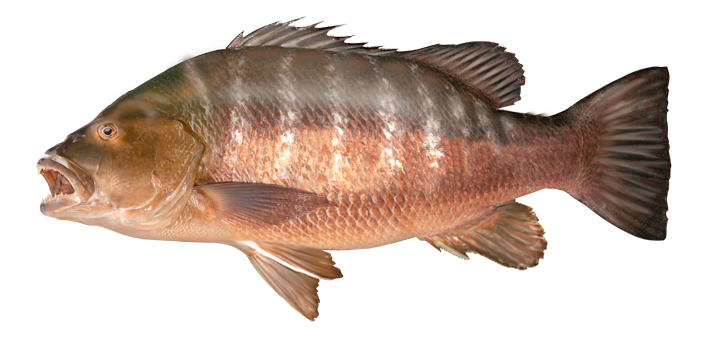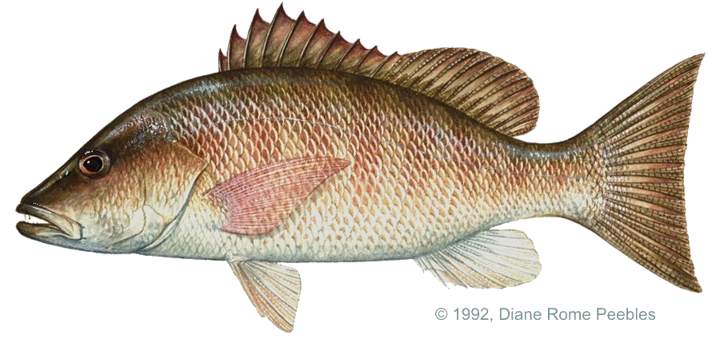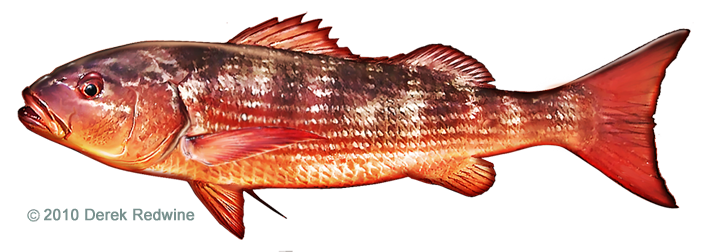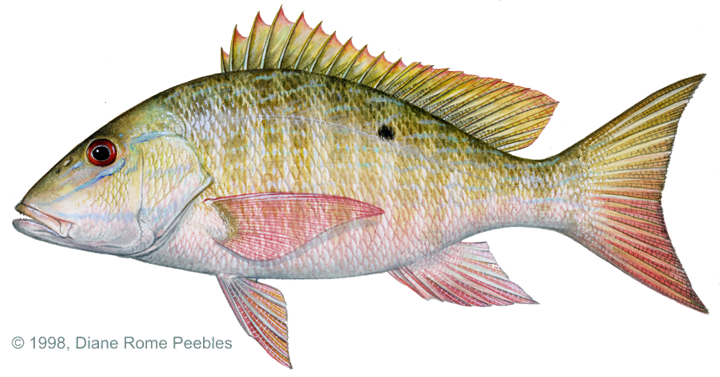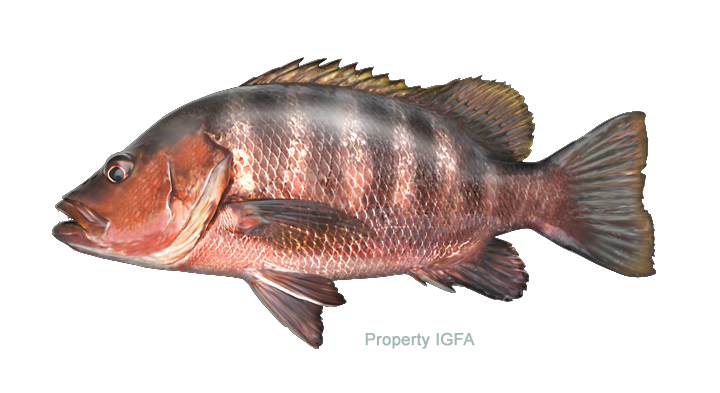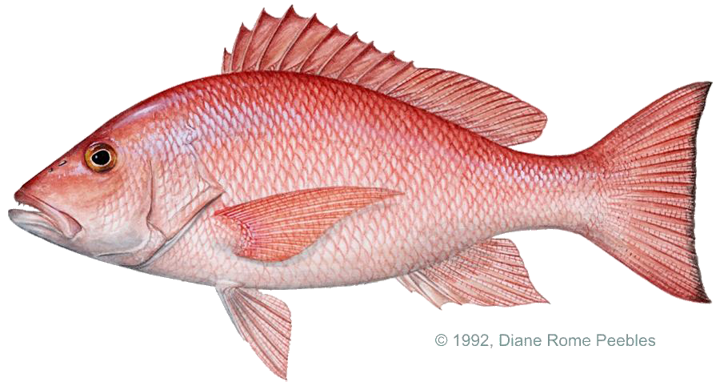Game Fish Identification Reference Guides
Snapper, Pacific cubera
(Lutjanus novemfasciatus)
(Lutjanus novemfasciatus)
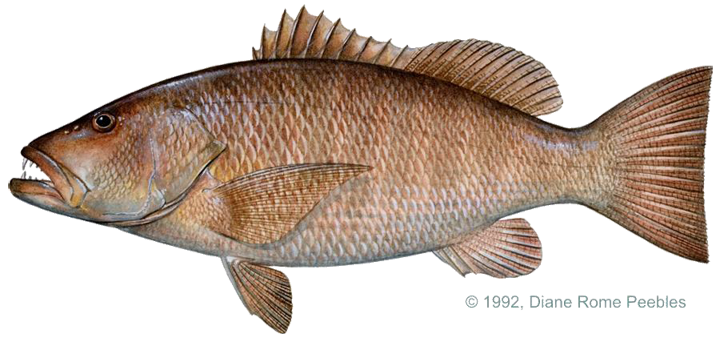
Gill, 1863; LUTJANIDAE FAMILY; also called black snapper, dog snapper
It is common throughout the Gulf of California (Sea of Cortez) from at least Laguna San Ignacio south to Panama, and probably Peru. It is an in shore Pacific species, frequenting reefs and caves from shallow waters to 100 ft (30 m) or more.
Growing to at least 80 lb (36 kg), it is the largest of the nine species of snapper that occur in its range. The most prominent and recognizable feature is the 4 large canine teeth, two in the upper jaw and two in the lower jaw. They are slightly larger than the diameter of the pupil of the eye and are the largest teeth of any snapper in its range. There is a crescent shaped patch of teeth in the roof of the mouth and other small ones are on the jaws.
As a juvenile, it is purplish brown with a light spot in the center of each scale, but adults and older fish become deep reddish in color. There is sometimes a blue streak under the eye, and about 9 dusky bars may or may not be evident to varying degrees on the flanks. The tail is almost truncate, usually being very slightly forked to crescent shaped. The dorsal fin has 10 spines followed by 14 soft rays, the anal fin rounded with 3 spines and 8 rays. The pectoral fins do not reach to the anal fin, nor do they reach as far as the vent in adults.
The Pacific cubera snapper looks quite like the cubera snapper (Lutjanus cyanopterus) of the western Atlantic, the “river” or”mangrove red” snapper (Lutjanus argentimaculatus) of the western Indo Pacific, and an African snapper (Lutjanus spp.). These three snappers and some others around the world, grow to sizes approaching or exceeding 100 lb (45 kg). All have deep reddish bodies, 4 large canine teeth, stubby gill rakers, and almost identical body and fin shapes, habitat, and behavior. These similarities and others are suggestive of a worldwide complex of large cubera type snappers that may be more closely related to each other than to most other members of the genus Lutjanus.
The Pacific Cubera is a strong fighter and sport fish that can be caught on live baits, jigs, spoons, feathers, plugs, or pork rind fished or trolled at up to 5 miles per hour. It is an active night predator of smaller fishes and crustaceans. It is excellent eating and is greatly prized as a sports catch
It is common throughout the Gulf of California (Sea of Cortez) from at least Laguna San Ignacio south to Panama, and probably Peru. It is an in shore Pacific species, frequenting reefs and caves from shallow waters to 100 ft (30 m) or more.
Growing to at least 80 lb (36 kg), it is the largest of the nine species of snapper that occur in its range. The most prominent and recognizable feature is the 4 large canine teeth, two in the upper jaw and two in the lower jaw. They are slightly larger than the diameter of the pupil of the eye and are the largest teeth of any snapper in its range. There is a crescent shaped patch of teeth in the roof of the mouth and other small ones are on the jaws.
As a juvenile, it is purplish brown with a light spot in the center of each scale, but adults and older fish become deep reddish in color. There is sometimes a blue streak under the eye, and about 9 dusky bars may or may not be evident to varying degrees on the flanks. The tail is almost truncate, usually being very slightly forked to crescent shaped. The dorsal fin has 10 spines followed by 14 soft rays, the anal fin rounded with 3 spines and 8 rays. The pectoral fins do not reach to the anal fin, nor do they reach as far as the vent in adults.
The Pacific cubera snapper looks quite like the cubera snapper (Lutjanus cyanopterus) of the western Atlantic, the “river” or”mangrove red” snapper (Lutjanus argentimaculatus) of the western Indo Pacific, and an African snapper (Lutjanus spp.). These three snappers and some others around the world, grow to sizes approaching or exceeding 100 lb (45 kg). All have deep reddish bodies, 4 large canine teeth, stubby gill rakers, and almost identical body and fin shapes, habitat, and behavior. These similarities and others are suggestive of a worldwide complex of large cubera type snappers that may be more closely related to each other than to most other members of the genus Lutjanus.
The Pacific Cubera is a strong fighter and sport fish that can be caught on live baits, jigs, spoons, feathers, plugs, or pork rind fished or trolled at up to 5 miles per hour. It is an active night predator of smaller fishes and crustaceans. It is excellent eating and is greatly prized as a sports catch













